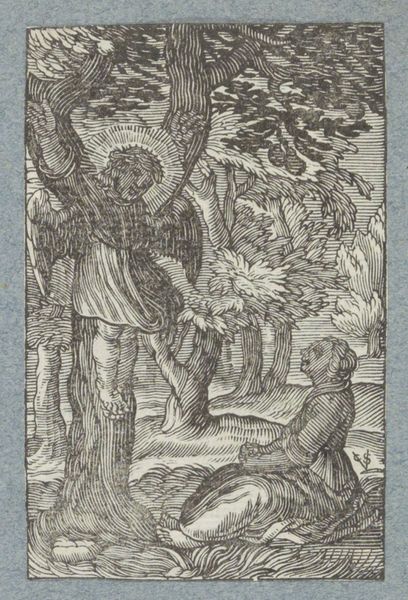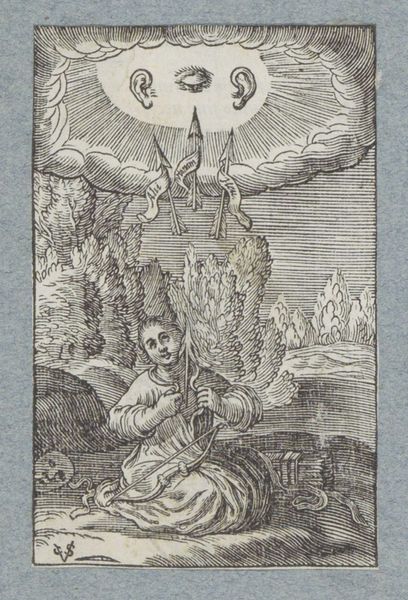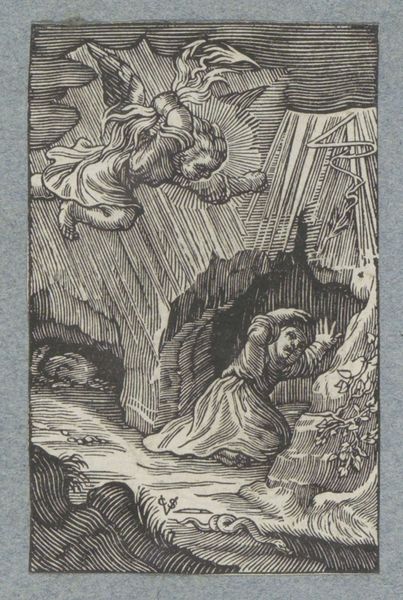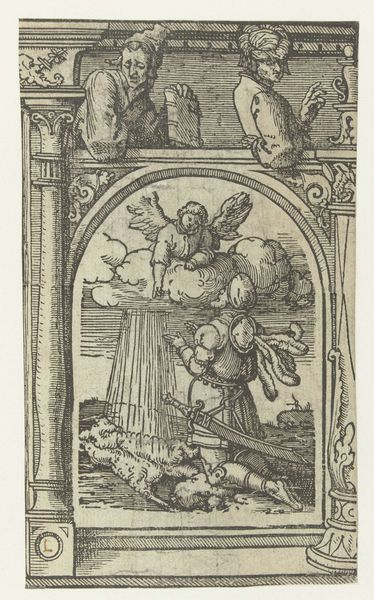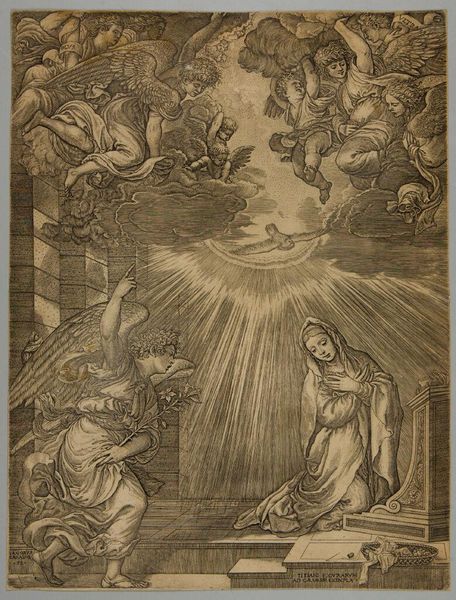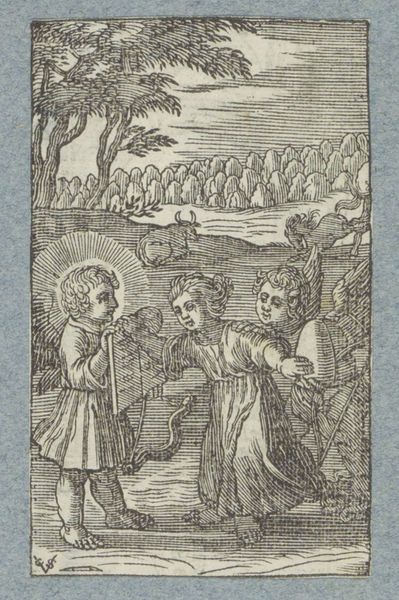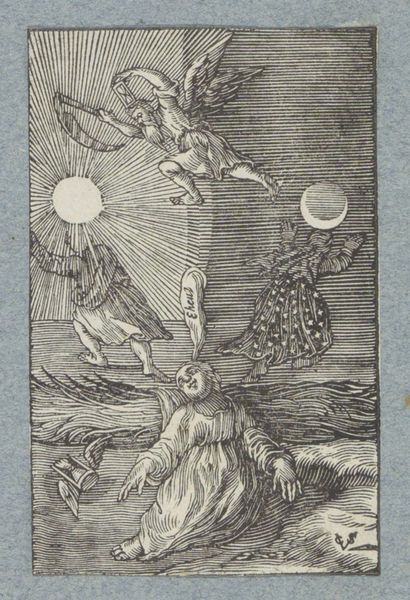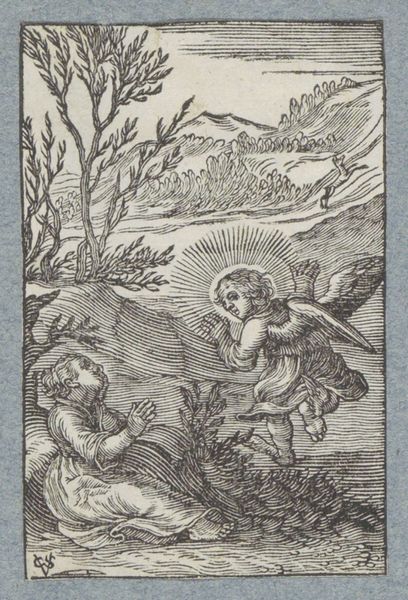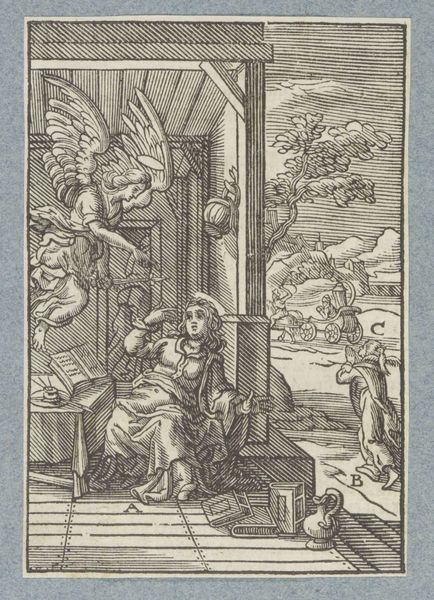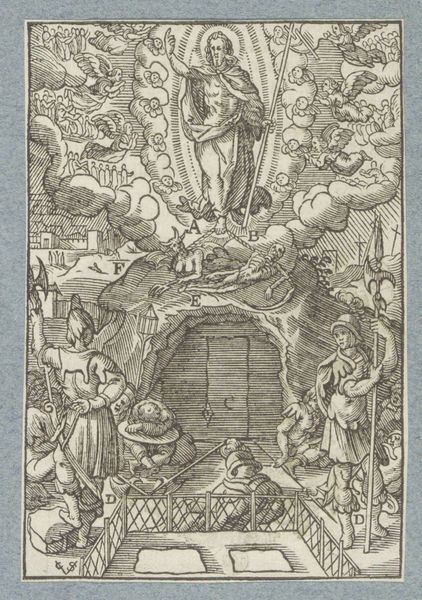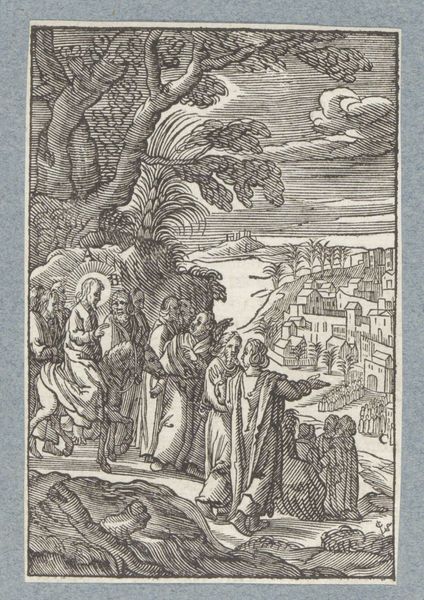
print, engraving
#
narrative-art
#
baroque
# print
#
landscape
#
figuration
#
history-painting
#
engraving
Dimensions: height 82 mm, width 54 mm
Copyright: Rijks Museum: Open Domain
Editor: We're looking at "Child with a Spyglass Sees the Last Judgement," an engraving by Christoffel van Sichem II from 1628. What strikes me is how the artist combines the mundane, the child in the foreground, with this really intense, apocalyptic scene in the distance. What do you make of the composition, how is the viewer guided here? Curator: Precisely. Observe the stark contrast established through the formal arrangement: the meticulous detailing of the verdant foreground sharply juxtaposed against the eschatological vision rendered with comparatively crude, linear strokes. The child, positioned as the primary observer, acts as a visual mediator, their gaze directed towards the distant spectacle. It's this act of observing, rendered materially through the spyglass, that creates meaning. Editor: So the child is key? I thought they just happened to be in the garden. Curator: Not merely present, but pivotal. The linearity of the garden path functions as a compositional vector, directing the viewer's eye towards the culminating event—the Last Judgement—yet that judgement remains mediated, observed, not directly experienced. Note the deliberate distortion and abstraction of figures within the divine sphere, creating a visual hierarchy where clarity diminishes with spiritual ascension. Is this a suggestion that knowledge of divine judgment comes to humanity only through flawed perception and interpretation? Editor: That's interesting, framing it that way. It also makes me think about the power dynamic: who gets to "see" and interpret. Is the spyglass only for the wealthy? Curator: An insightful query. Indeed, the materiality of the spyglass itself contributes to the meaning, signifying access, knowledge, and perhaps, the privileged perspective. It elevates the mundane to the level of spectacle. The formal elements suggest complex interplay between observation, perception, and privileged access to knowledge and visual power structures of the time. Editor: I see how unpacking the visual structure unlocks deeper contextual readings. Curator: And a reminder that form is never divorced from content; they exist in symbiotic resonance.
Comments
No comments
Be the first to comment and join the conversation on the ultimate creative platform.

